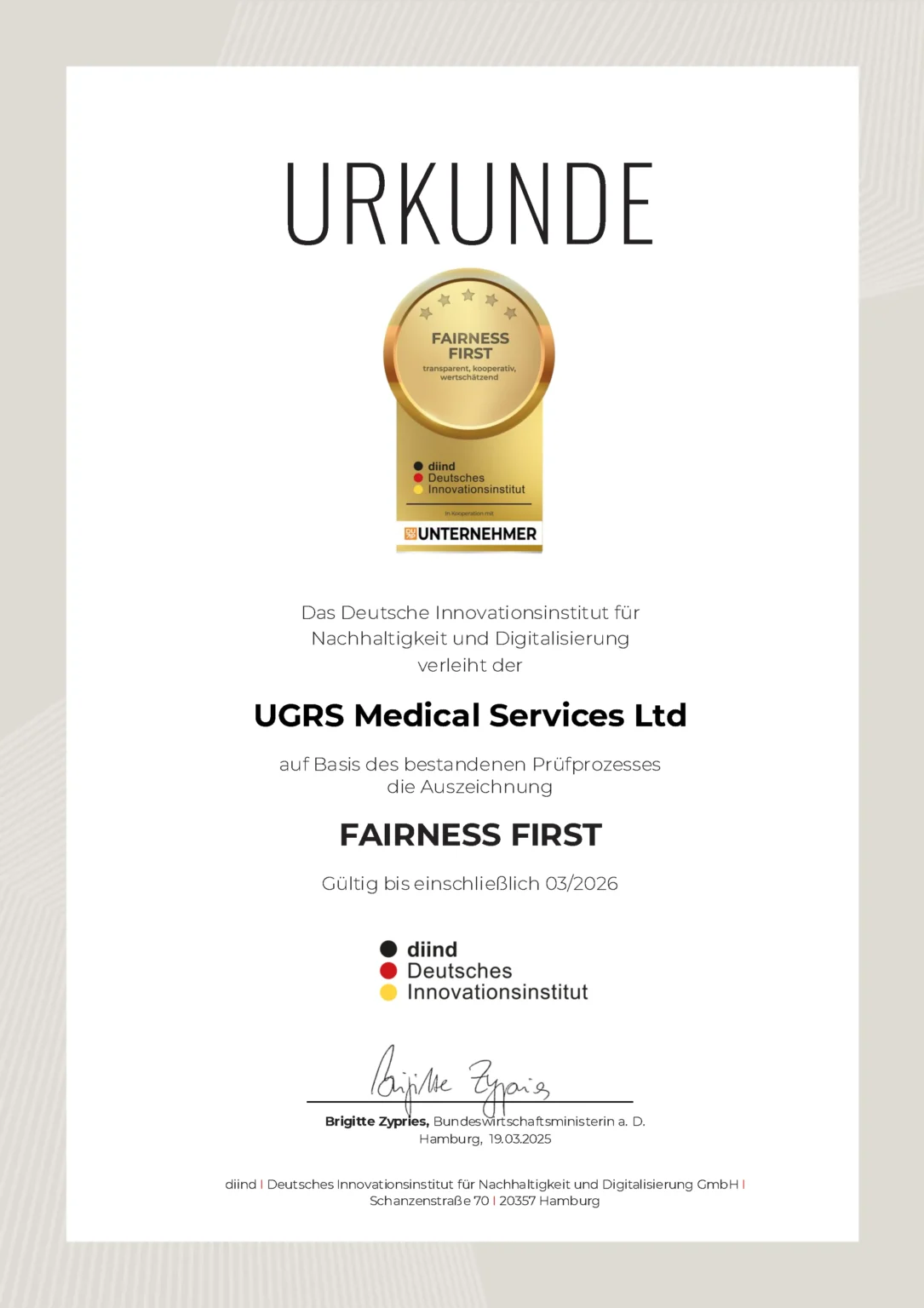Home » Uncategorized » HPV on the penis
HPV, the long underestimated danger
HPV stands for human papillomavirus – this is a group of viruses that can infect the skin and mucous membranes. Some HPV types cause genital warts, others can cause cancer in the long term, especially in the partner!
An infection with HPV on the penis often goes unnoticed.
What is HPV?
HPV (technical term: human papillomavirus) is unfortunately a very common sexually transmitted infection. There are over 200 different types of HPV. These are roughly divided into two groups:
- Low-risk types - they can cause genital warts (technical term: condylomata acuminata = typical warts, often elongated at the edge of the glans), but are generally not carcinogenic.
- High-risk types - they often cause no visible symptoms, but can cause cancer in the long term, e.g. on the cervix, anus or penis.
HPV is very common: Most sexually active people become infected at least once during their lifetime – often without knowing it.
How do you get infected with HPV?
HPV is mainly transmitted through skin-to-skin contact – usually during sex. Contact with the skin in the intimate area is often enough. This means that
- Vaginal, oral or anal intercourse
- Petting (touching the genitals with the hand)
- Less common: transmission through shared sex toys or contaminated objects
Condoms only offer partial protection against infection because they do not cover the entire surface of the skin.
What happens with an HPV infection on the penis?
HPV can infect all areas of the penis, for example:
- the acorn
- the penis shaft
- the scrotum
- the foreskin (technical term: prepuce)
- Less frequently: the internal urethral orifice
Most HPV infections are asymptomatic and heal on their own – especially in young, healthy men. However, visible or noticeable changes can also occur.
What symptoms can HPV cause on the penis?
Most common symptom: genital warts
Genital warts are small, soft, usually skin-colored or reddish growths. They occur individually or in groups and can look like:
- small nodules
- cauliflower-like elevations
- Flat, sometimes barely visible spots
They rarely cause pain, but can itch, burn or be perceived as irritating.
How do you recognize HPV on the penis?
An HPV infection is usually detected by a urologist.
In case of suspicion: special tests, e.g. smears, magnifying glass examination or HPV DNA detection
Unfortunately, a blood test does not help: HPV is only detected directly on the skin or mucous membrane.
What to do with an HPV infection?
If no symptoms are present:
In many cases, the infection heals itself without the need for treatment. The immune system fights the viruses.
Since an infection is not noticed without symptoms, this is probably the most common case.
The danger during this period, however, is the risk of infection for others, i.e. your sexual partner.
When genital warts appear as a symptom:
There are various treatment options:
- Ointments or creams
- Icing (technical term: cryotherapy)
- Laser treatment
- Surgical removal
Sometimes several sessions are necessary and relapses (recurrences) can occur.
The danger of HPV
Certain high-risk HPV types (e.g. type 16 or 18) can lead to precancerous lesions or, in very rare cases, cancer in the long term.
Rare consequence: Penile cancer
Frequent consequence (in proportion): Cervical cancer
High-risk HPV types are the most common cause of cervical cancer
Other sites: Oral, pharyngeal and anal cancer due to sexual practices
Can you protect yourself against HPV?
Yes, the best way is through vaccination and it is particularly important for the partner! Since the introduction of vaccination, the incidence of cervical cancer has fallen significantly.
1st vaccination
The best option for prevention is the HPV vaccination. It protects against the most common high-risk and low-risk types.
- Recommended for boys and girls aged between 9 and 14
- Vaccination at a later age (up to around 26 years) is also possible and sensible
- The earlier the vaccination, the better the protection
2. safer sex
- Condoms reduce the risk, but do not provide complete protection
- Keeping intimate areas clean
- If there are visible skin changes: abstain from sex and seek medical advice
The medical information provided on this website is for general information purposes only and does not replace a personal consultation with our doctors. As a tertiary medical center, we are also available for second opinions.
© Copyright Jörg Hagen, Doctor
About the author
Jörg Hagen, doctor
The author Jörg Hagen has been the medical director of UGRS International Germany since 1995 and has over 30 years of experience in penis enlargement and complex urological issues. He is regarded as one of the leading experts in the interests of patients in Europe. His international activities, excellent diagnostics and legal successes in patient rights make his assessments particularly well-founded. Patients appreciate his scientifically based, discreet and trustworthy care. His articles are based on many years of practice and well-founded information at the highest level.
This content is for general information purposes only and does not constitute medical advice, diagnosis or treatment recommendations. It is in no way a substitute for a professional examination or treatment by a licensed physician. If you have any health complaints or uncertainties, please always consult a medical professional – especially if you have any questions about intimate surgery or sexual health.










